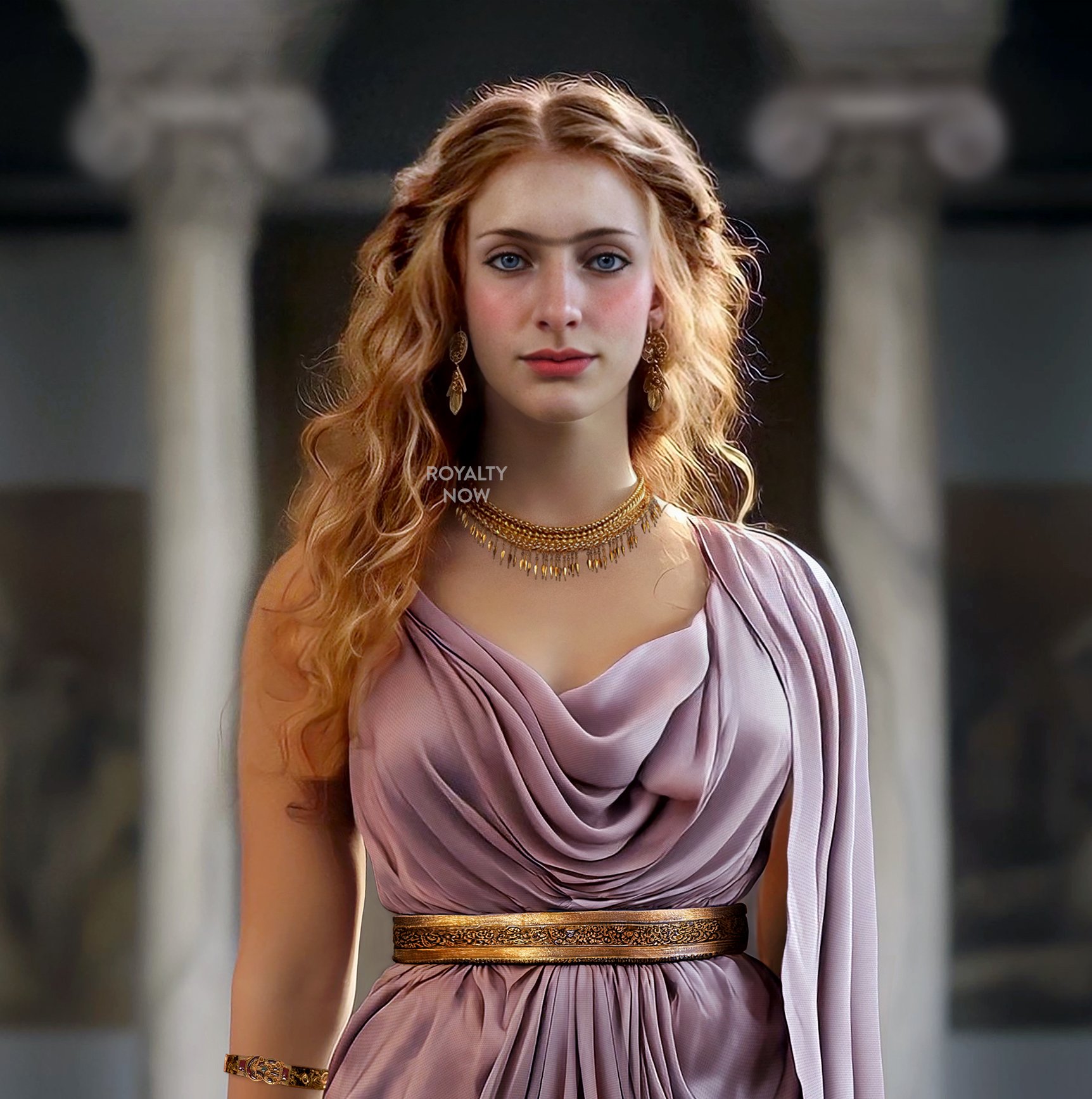What did Helen of Troy look like? With Re-creations.
How do we re-create the “face that launched a thousand ships”? What a question this is.
Since Helen’s story lives in the realm of mythology, it differs depending on who is telling it. Her personality and beauty traits change depending on the author - and of course the author’s own idea of what the perfect woman looks like.
My goal with the re-creation here is to make the ideal woman using ancient Greek beauty standards!
Let’s first start with some descriptions of Helen that we’ll use as a jumping off point for the re-creation.
Homer’s works barely give us anything - we get three descriptors: “White-armed”, “Long-Dressed” and “Lovely Haired”. Perhaps Homer was intentionally vague, so that each reader could construct their own vision of Helen of Troy.
In a surviving poem fragment by Sappho, Helen’s hair is described as “Xanthe” - which translates to anywhere between blonde, light brown, and reddish. In other lyric poems, she is described as having “gleaming blue eyes”.
Now, Let’s talk about ancient Greek beauty standards from the time the Iliad and Odyssey were written, and what they would have considered the most attractive.
For women, a full, softly shaped body with a small waist was ideal, and this would also apply to the face. They preferred delicately curved facial features. A long, straight aquiline nose and large can be seen on idealized statues from the time period.
The most desirable hair was long, with a wavy texture. One of the reasons Helen is always depicted as light haired with blue eyes in art is that this was rare coloring for the Greeks, and therefore highly sought-after.
Helen was Spartan, so she would have worn the Dorian-style Peplos typical of Spartan women. This was a tunic-style dress, fastened at the shoulders with pins, and was made of linen or fabric similar to wool. Women’s clothing would be naturally dyed, and could be any number of colors.
High-class women wore plenty of jewelry - rings, armbands, pendants, and earrings in order to display wealth and decorate themselves.
So, knowing all this, how do we actually construct Helen?
Helen’s face here has been constructed using the Golden Ratio, with the influence for her features taken from an ancient Greek statue of Aphrodite - the goddess of Love and Beauty seemed like a good place to start.
Now, the Greeks, being geniuses of mathematics and art, used the Golden Ratio to guide their art and architecture.
Also known as the Divine Proportion - this principle states that when a line is divided into two parts in a ratio of 1: 1.618, it creates the ideal proportion. Now, I’m not going to pretend I know why this works mathematically - I’m an artist not a mathematician. But, this phenomenon has been studied extensively, and this proportion, which is found everywhere in nature, has been proven to be pleasing to our human brains.
My golden ratio guidelines for creating Helen’s face.
According to this principle, a balanced face is approximately 1.6 times longer than it is wide.
The eyes should be about 1.6 times as wide as the lips.
The distance from the top of the nose to the center of the lips is 1.6 times the distance from the center of the lips to the chin.
The lower lip is 1.6 times as large as the upper lip…and so on. These specific proportions have been used to construct every single part of her face.
The only exception I found to the Divine Proportion on Greek Statues was a slightly longer nose than the ratio would suggest, so I included that here.
I also wanted to create a version with ancient Greek Makeup techniques. Greek women were no stranger to cosmetics, and used them extensively.
Fair skin was really prized in Greek culture, but mostly because of social class - high class women wouldn’t need to work in the sun. As a result of this standard, Greek women would use powdery white makeup to lighten their skin even further. Natural dyes like beetroot were used as rouge to their lips and cheeks.
Where they loved a dramatic look was in the eyes and eyebrows. Kohl was used to line the eyes - a smoky eye was a very popular look. It was also popular to have bold, dark eyebrows. Even eyebrows that met in the middle - which were seen as a sign of symmetry and purity. If the brows didn’t naturally meet in the center, kohl was used to join the two sides. Obviously a little garish to our modern gaze.
Re-creation of Helen with ancient Greek makeup standards applied.
As a bonus, I’ve also created a Mycenaean-style Helen.
The Myth of Helen of Troy may have originated even further back than Greek Culture. In Homer’s works, Helen lived around 1200 BCE during the Mycenaean period.
This plaster head of a woman dates back to that time. We don’t know much about it - historians believe it could be the head of a goddess. Of course, since we know so little, it’s hard to say if this is accurate, but I had fun creating an alternate version. I’ve incorporated the dark hair and eyes of this figure, as well as the red rosette makeup.
Mycenaean-styled Helen.





